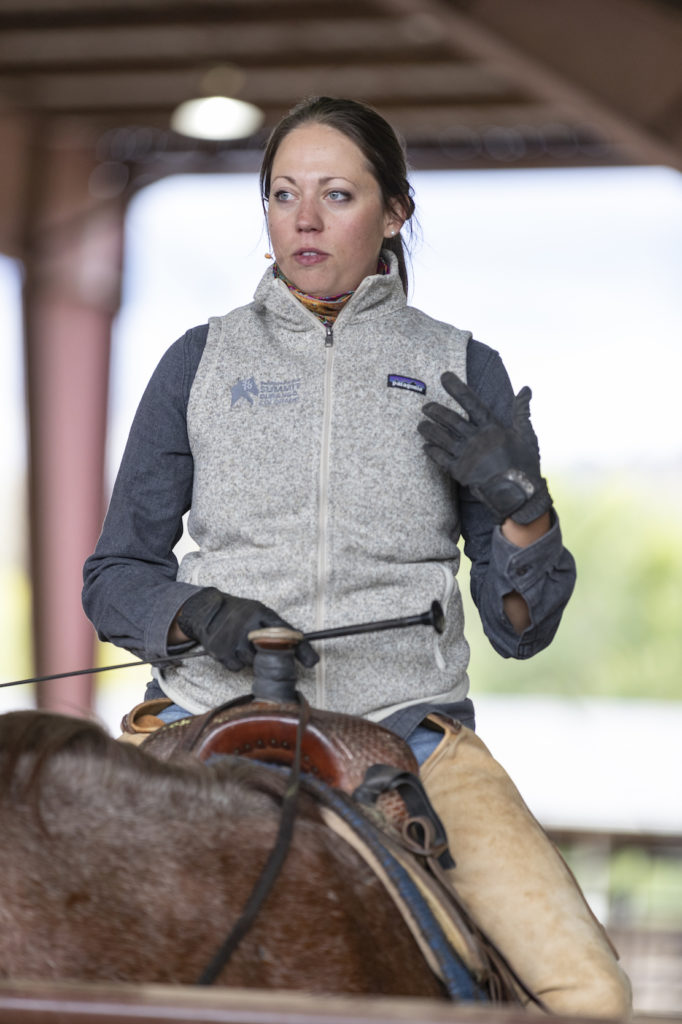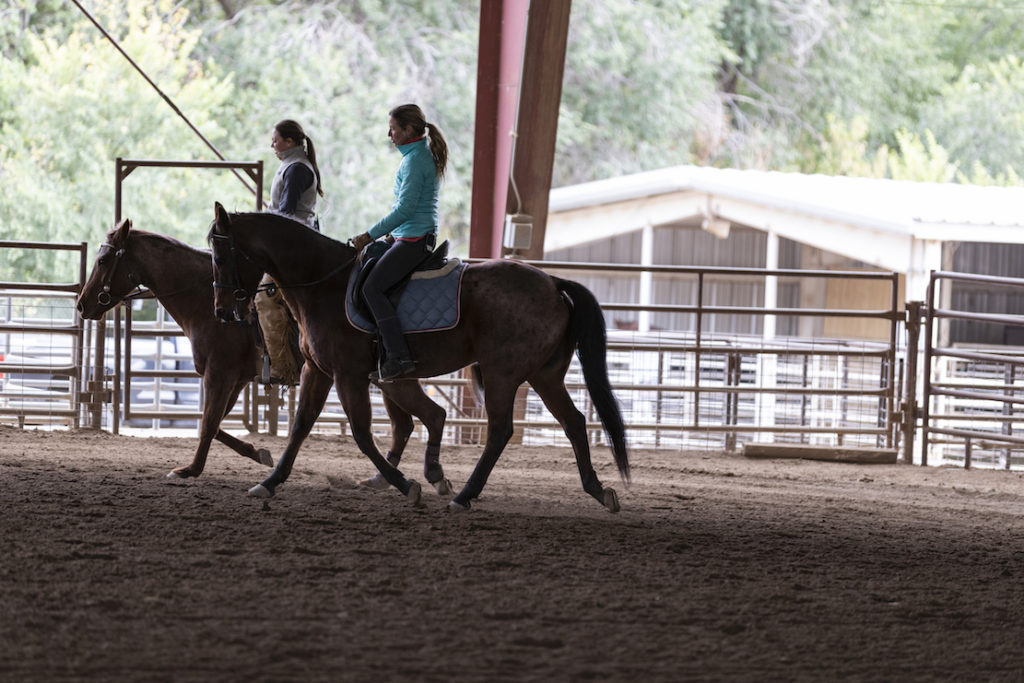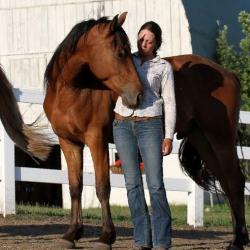
Amy Skinner at the BHPS
Advice on best trainer practices heard over the years from my colleagues:
- Control your online content.
- Censor what you say.
- Don’t ever, ever come across like you don’t know something.
I tried this for a while, and felt insincere and cheap. As my students ran into their own struggles, I felt I couldn’t help them if I couldn’t share my own failures. I realized that some trainers and teachers like to portray themselves as all-knowing while the students, at times, feel hopeless, as if their humanness is preventing them from getting better at riding.
One day, I just dropped the act.
In my articles and social media presence I have been fairly candid about my struggles, failures, and successes. I started sharing my failures with my students, and writing about my own struggles as I develop my career. For me, it’s important for my own development as well as others to look our egos in the face. Everyone has one, and at best we can “not disturb the sleeping dog.”
Sometimes we get humbled. Sometimes we struggle to accept lessons or we miss them. No one is exempt from the journey, unless you simply refuse to accept your own flaws. Teacher and student alike are learning, and one is not better than the other.
When we’re willing to get down to the nitty gritty of our inner selves and really look at our habits and beliefs, then we can make real and lasting changes. I’m right there with you.

Silva and Amy Skinner present at the Best Horse Practices Summit
I realized through watching my own teachers that some were very concerned about their dress, words, and image. They wore appropriate attire, said things that sounded good in public, and maybe rode nicely in front of a crowd. But as they got comfortable with me and the crowd left, their true colors would show. Impatience for horses’ mistakes, insecurity, lack of understanding, or a temper with horses or students.
Some of my teachers showed true compassion to horses and humans at all times, whether the student was talented or not, the horse was well bred or well educated or not, or whether the situation would make the teacher look good or not. These teachers walked the walk in all places in their lives – they treated others with respect, and did not seem overly concerned with their public image. I realized after some time with these teachers of both kinds that what I wore mattered little, and what I said mattered less if I couldn’t back it up with my action and behavior.
My test for myself now in my dealings with horses and students:
- Would I do the same thing now if others weren’t watching?
- Would I do the same thing with this horse if there were no “glory” or public praise for doing it?
- Do I treat the beginner with the same type of respect as the advanced student?
- Do I deal with riders’ issues with compassion?
- Do I ever make people feel badly?
- Would I do the same quality of work if the pay was less?

Amy Skinner
My role models left an enormous and important impression on me. Teaching and training isn’t about making money. It isn’t about getting the public to be impressed or getting good press. It’s about helping horses and helping people. That means teaching and training has plenty of unglamorous moments, hours of basics that may be boring to watch. No dust flying, no tears, no showmanship. Just peaceful, quality work between a horse and a human. That is work I can be proud of.
You go girl! You are on the right path, as far as I can see. You, your horses, and your students are so much better off with the honesty , integrity, and compassion you always show. Sending you love and hugs!
Great insight Amy!!
Vulnerability is the new Badass!!
West Taylor